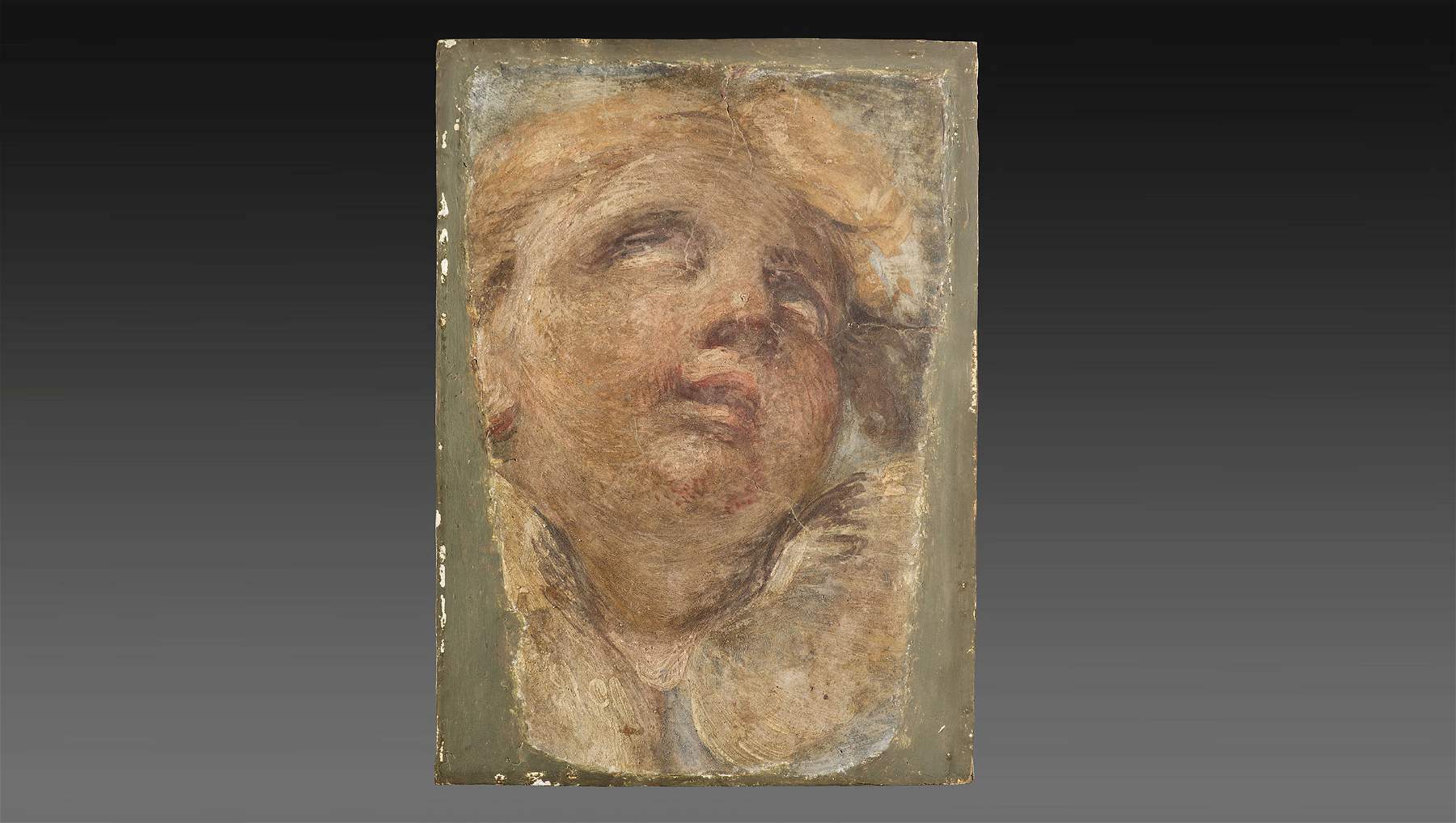Unpublished Correggio fragment resurfaces, goes on display in his hometown
An unpublished fragment, from a lost work by Correggio (Antonio Allegri; Correggio, 1489 - 1534), is on display from Oct. 17, 2020, to Jan. 17, 2021, at the “Il Correggio” Museum in the artist’s hometown. The rediscovered fragment, a detached and pasted fresco on copper preserved in a private collection, is included in an exhibition entitled Nei cieli del Correggio that aims to reconstruct the history of the lacerto. The exhibition, curated by Maria Cristina Chiusa and Gabriele Fabbrici, aims to reconstruct the history of the fragment, which is believed to come from theCoronation of the Virgin, a work by Correggio dating back to 1522: it is the fresco that decorated the apse basin (destroyed in 1587) of the church of San Giovanni Evangelista in Parma.
According to art historian Maria Cristina Chiusa, who is responsible for attributing the fragment to Correggio, the hand of the Emilian painter is recognizable on the basis of philological-stylistic figures that, according to Chiusa, are “unmistakable,” and to the stylistic data, the scholar points out, is added “solid documentation.” The stylistic comparison, in Chiusa’s opinion, demonstrates links with the only other four fragments known to date, all of which come from theCoronation of the Virgin and are preserved at the National Gallery in Parma, the National Gallery in London and the Museum of Fine Arts in Boston.
The exhibition itinerary includes an introductory historical-didactic part that, with the help of QR codes, allows visitors to access previously unseen content, also in audio format. This is followed by access to the room in which Correggio’s Head of a Cherub is preserved, and then a virtual reconstruction of the apse basin of the church of San Giovanni Evangelista in Parma with repositioning of the fragment, created for the occasion by Jacopo Veroni of Blackforge.
“The bond that unites Correggio and Antonio Allegri,” says Correggio Mayor Ilenia Malavasi, "is ancient and deep and is the story of an artist’s relationship with his hometown, which remembers his genius and talent that contributed so much to theRenaissance pictorial art, but it is also a troubled history with a city that experienced a succession of painful deprivations, due to the losses suffered between the seventeenth and eighteenth centuries of the two works painted for the city by Correggio. In recent years, thanks to the impetus given by our documentation center and the activity of the Il Correggio Foundation, there have been numerous events dedicated to Correggio, starting with the exhibition Il Correggio a Correggio, which made it possible to discover the authenticity of the central element of the triptych of the Humanity of Christ, exhibited in the Vatican Museums, and ending with the recent initiatives related to the Reggio Emilia exhibition on the Lady. Therefore, it is with particular pleasure, excitement and pride that we present today a new and fundamental Allegrian discovery: an unpublished fragment of a fresco from the destroyed Coronation of the Virgin made for the apse of the church of San Giovanni Evangelista in Parma. A fragment studied at length by Maria Cristina Chiusa and which today, for the first time, is the subject of an exhibition event that restores its public enjoyment and opens up new avenues of research aimed at further deepening our knowledge of Allegri. In addition to the historical and technical value of this discovery, the exhibition also represents, for the city, a moment of reappropriation of an important and evocative public space as the Museum is, and it is very significant that this takes place in the name and through the work of its most famous son, Antonio Allegri, known as Correggio."
The exhibition is free admission, with shifts by mandatory reservation of 20 people per hour. Catalog with preface by Ilenia Malavasi and texts by Gabriele Fabbrici and Maria Cristina Chiusa available at the venue. For information and reservations call 0522 691806, email museo@comune.correggio.re.it, or visit the Museo Il Correggio website.
 |
| Unpublished Correggio fragment resurfaces, goes on display in his hometown |
Warning: the translation into English of the original Italian article was created using automatic tools. We undertake to review all articles, but we do not guarantee the total absence of inaccuracies in the translation due to the program. You can find the original by clicking on the ITA button. If you find any mistake,please contact us.




























